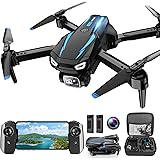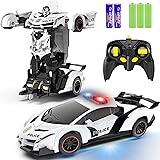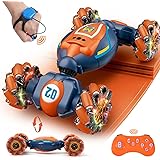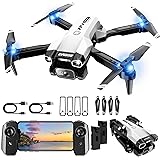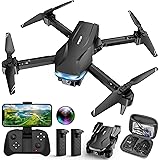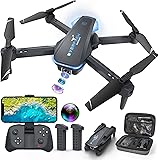Could the thrill of aerial exploration and cutting-edge gadgetry truly be accessible for under $30? As the accompanying video succinctly illustrates, the realm of tiny spy drones and budget-friendly UAVs is more vibrant than ever. This featured model, a compact quadcopter acquired online, represents a significant leap in making sophisticated technology available to a broader audience. It serves not merely as a toy, but as a practical entry point into the burgeoning world of drone operation and aerial imaging, redefining what is expected from a low-cost unmanned aerial vehicle.
The concept of a “spy drone” often conjures images of covert operations and high-tech surveillance. However, in the context of consumer-grade electronics, this moniker typically denotes a device distinguished by its diminutive footprint and unobtrusive operational characteristics. Such a compact design facilitates easy concealment and allows for flight in constricted environments where larger drones would be impractical. The specific model highlighted, lauded for its portability and ability to integrate seamlessly into its controller, exemplifies this design philosophy, offering both convenience and a touch of novelty.
The Allure of Compact UAVs: Deconstructing the “Tiny Spy Drone” Appeal
The market for unmanned aerial vehicles (UAVs) has diversified dramatically, with a significant segment now dedicated to mini drones. These micro-UAVs, often characterized by their palm-sized dimensions, are not only appealing for their novelty but also for their functional versatility. The term “spy drone” in this consumer context largely references this inherent discreetness—its small stature allows for flight and observation without drawing undue attention, a capability that resonates with both hobbyists and those exploring novel perspectives for photography or exploration.
Portability and Discretion: Micro-UAVs in Focus
Firstly, the paramount advantage of a tiny spy drone is its exceptional portability. This particular model’s capacity to be housed within its controller is a testament to intelligent industrial design, a feature that significantly enhances user convenience. The ease with which such a device can be transported, requiring minimal space, makes it an ideal companion for spontaneous flights, travel, or even discreet indoor operations. This contrasts sharply with larger, more cumbersome quadcopters that often necessitate dedicated carrying cases and more involved setup procedures. The operational discretion afforded by its small size permits exploration in environments where a larger UAV would be conspicuous, akin to a quiet observer moving through a bustling crowd.
Entry-Level Accessibility in the Drone Market
Secondly, the pricing strategy for these affordable drones is revolutionary. At approximately $25, this device radically lowers the barrier to entry into aerial robotics. Traditionally, drone ownership was perceived as an expensive hobby, demanding significant upfront investment. However, models like this Chinese quadcopter democratize the experience, enabling individuals from various economic backgrounds to engage with drone technology. This price point positions it not just as a casual purchase but as an accessible educational tool, providing a low-risk platform for beginners to master flight dynamics and photography basics without the apprehension of damaging a costly piece of equipment. It is effectively the bicycle of the drone world – simple, forgiving, and an excellent starting point.
Navigating the Skies: Understanding the Core Mechanics of a Budget Drone
Despite their low cost, modern budget drones are engineered with surprisingly robust core mechanics. The functionality of these devices, while simplified compared to professional-grade UAVs, still relies on fundamental principles of aeronautics and digital communication. Understanding these components illuminates why such an inexpensive gadget can deliver a satisfying flight experience and useful features.
Wi-Fi Connectivity: Bridging the Drone-Smartphone Gap
Thirdly, the primary interface for controlling this mini drone is typically a mobile application, which communicates with the device via Wi-Fi. This ubiquitous wireless protocol facilitates a direct link between the drone’s onboard flight controller and the user’s smartphone. While often operating on the 2.4 GHz band, which is prone to interference in dense urban environments, this connection method is cost-effective and readily available on all modern smart devices. The app, downloadable from platforms like Google Play and the App Store, transforms the smartphone into a sophisticated remote control, complete with virtual joysticks and dedicated buttons for photo and video capture. Data, including captured imagery and live video streams, is transmitted wirelessly to the phone, allowing for real-time aerial reconnaissance and immediate storage of media. It operates much like a dedicated miniature wireless network, creating a direct communication channel for command and control.
Powering the Flight: Battery Technology and Rapid Recharge Cycles
Fourthly, power management is a critical aspect for compact quadcopters. This particular tiny spy drone comes equipped with two batteries, a thoughtful inclusion that mitigates the inherent limitation of short flight times typically associated with micro-drones. The stated 10-minute charging time per battery is particularly impressive, suggesting the use of efficient LiPo (Lithium Polymer) cells and optimized charging circuitry. Such rapid recharge capabilities are vital, as they significantly reduce downtime between flights, allowing for extended play or practice sessions over a shorter period. It’s like a formula one pit stop for your drone – quick battery swaps or charges to get you back in the air with minimal delay.
Integrated Imaging: Aerial Photo and Video Capture at Your Fingertips
Fifthly, the integrated camera system, while modest, is a hallmark of modern affordable drones. The ability to record films and capture photos directly to a smartphone via the accompanying app elevates the utility of this device beyond mere flight. Users can experiment with aerial photography, capture unique perspectives, and document their surroundings from above. While the resolution and sensor quality will not rival professional equipment, the sheer novelty and accessibility of producing aerial content at this price point are substantial. It offers a practical way for aspiring aerial videographers to learn framing, composition, and flight paths without significant financial outlay.
Operational Simplicity: A Gateway to Aerial Robotics
The design philosophy behind these entry-level mini drones prioritizes user-friendliness, making them ideal for individuals taking their first steps into the world of remotely piloted aircraft. This emphasis on simplicity extends from the initial setup to the nuanced control of flight, significantly lowering the cognitive load for new operators.
The Smartphone as Your Command Center: App-Based Control and Interface
Sixthly, the reliance on a smartphone as the command center revolutionizes the user interface for beginner drones. Modern mobile applications provide intuitive graphical interfaces that are instantly familiar to most users. Virtual joysticks offer precise control over ascent, descent, yaw, and translational movement, while dedicated buttons facilitate one-touch takeoffs, landings, and emergency stops. Furthermore, many apps include calibration routines, flight mode selections (e.g., headless mode for simplified orientation), and even basic flight path programming. This digital ecosystem offers a comprehensive yet digestible control experience, effectively transforming a complex piece of robotics into an accessible gadget controlled through familiar gestures and taps.
Why Small Drones Offer a Superior Learning Platform
Seventhly, for aspiring drone pilots, commencing with a tiny spy drone presents a distinct pedagogical advantage. The intrinsic stability of these micro-UAVs, often enhanced by internal gyroscopes and accelerometers, provides a forgiving learning curve. Unlike larger, more powerful drones that can be intimidating and costly to repair after a crash, a small, inexpensive model encourages experimentation. Indoor flight practice becomes viable, allowing new pilots to develop essential motor skills, spatial awareness, and command response in a controlled environment. The reduced weight and thrust also minimize potential damage to surroundings or injury to bystanders. It’s comparable to learning to drive a compact car before graduating to a heavy-duty truck; the fundamentals are the same, but the initial experience is less daunting and more forgiving of mistakes.
Maximizing Value: Strategic Investments in Entry-Level Drone Technology
The strategic acquisition of an entry-level affordable drone extends beyond its immediate purchase price. It involves understanding the long-term implications for skill development, potential upgrades, and the overall trajectory of one’s engagement with drone technology. These budget drones are not just one-off purchases; they are investments in a foundational experience.
Beyond the Price Tag: Evaluating True Cost-Effectiveness
Eighthly, while the $25 price point is undeniably attractive for this tiny spy drone, a comprehensive evaluation of its cost-effectiveness requires considering additional factors. The inclusion of two batteries, for instance, significantly enhances operational utility, effectively doubling the potential flight time per outing. Maintenance costs for such simple devices are typically minimal, often involving only propeller replacements, which are inexpensive and readily available. The true value proposition lies in the experience gained: the hundreds of hours of flight practice, the development of piloting acumen, and the initial foray into aerial imaging. This foundational learning, acquired at minimal financial risk, paves the way for more significant future investments in advanced UAVs, making the initial outlay remarkably cost-effective in the grand scheme of drone education.
The Evolution from Micro-UAVs to Advanced Platforms
Ninthly, the journey often begins with a mini drone but can evolve into operating more sophisticated aerial platforms. The skills honed on a basic model—throttle management, directional control, orientation awareness, and flight planning—are directly transferable to larger, more complex quadcopters, including those from industry leaders like DJI or specialized FPV (First Person View) racing drones. The logical progression for a hobbyist might involve upgrading to drones with GPS stabilization, higher-resolution cameras, longer flight times, and more advanced autonomous flight modes. This initial exposure to drone operation, facilitated by an accessible budget drone like the one showcased, forms the indispensable bedrock for mastering the intricacies of advanced aerial robotics and exploring its diverse applications.


